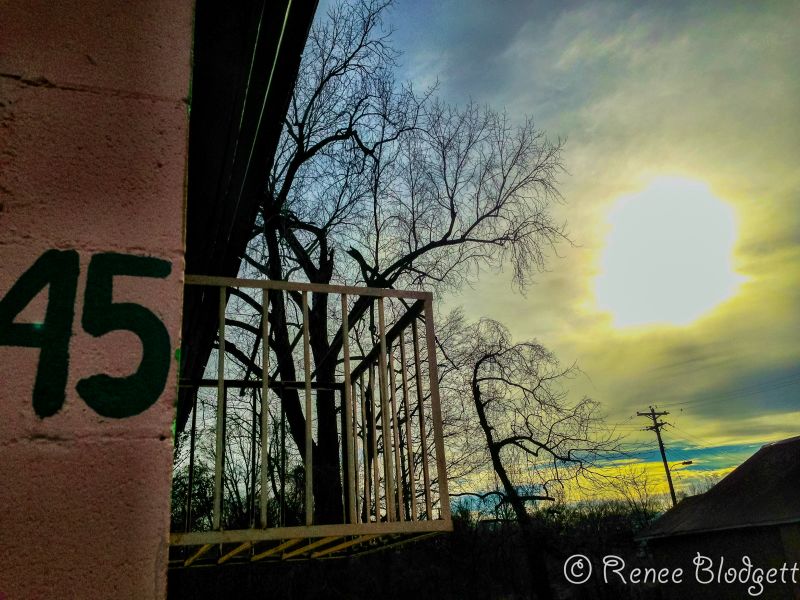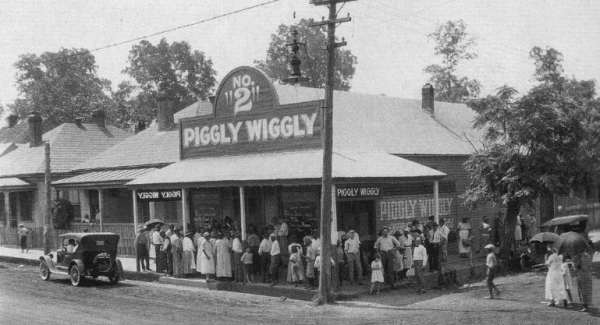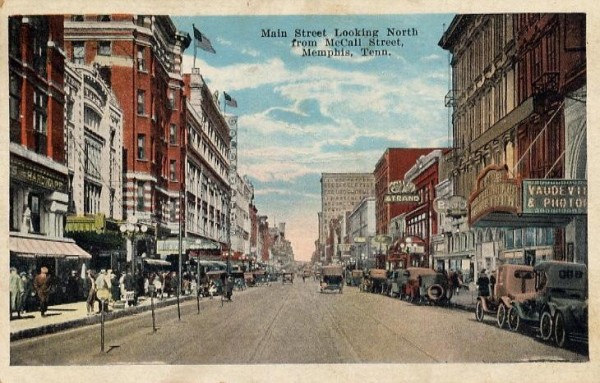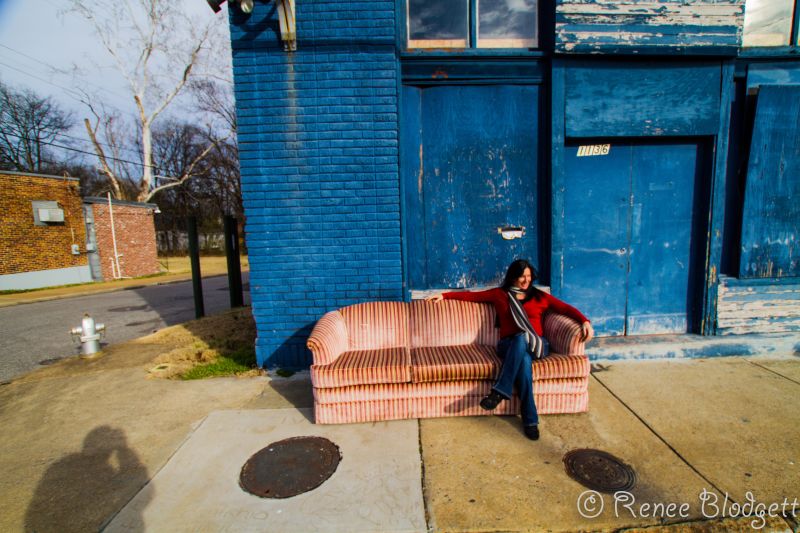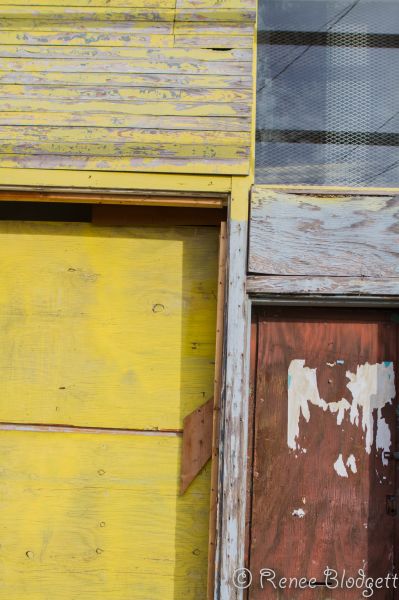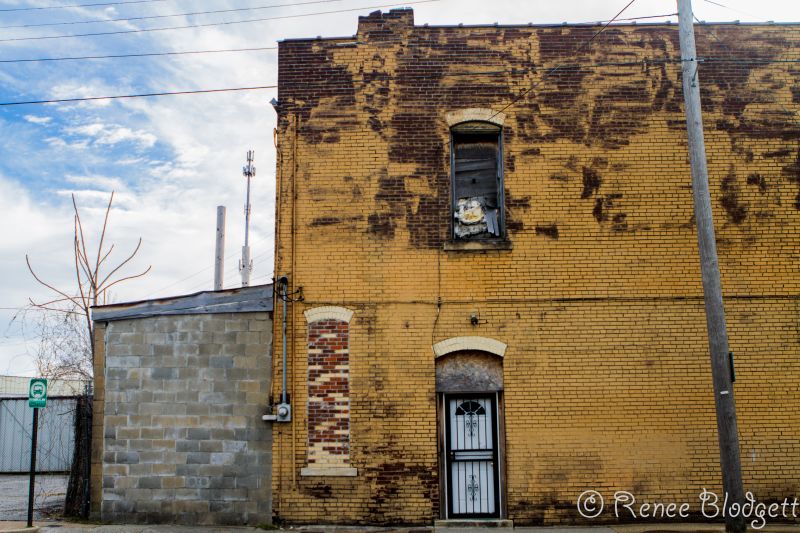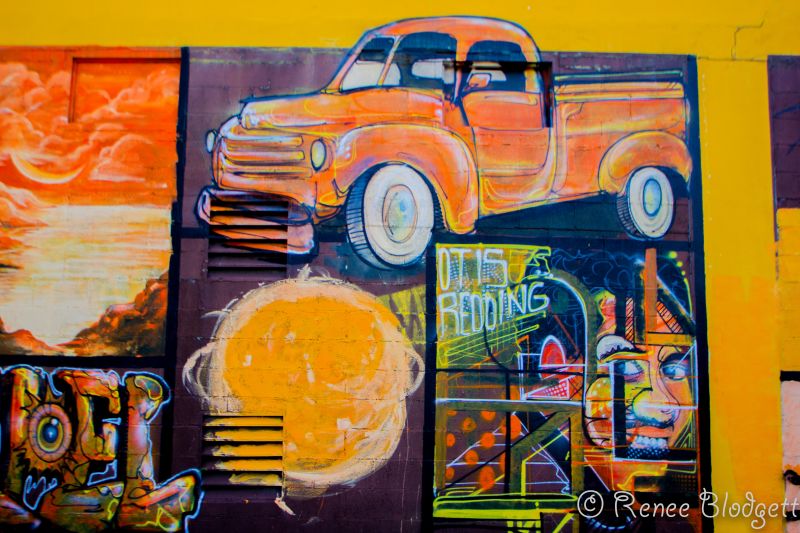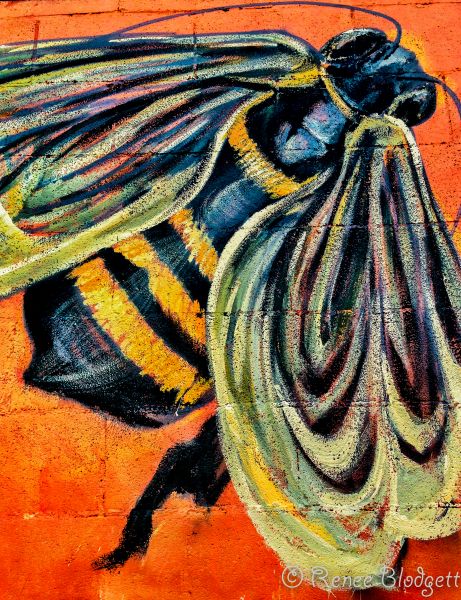In 1916, the modern supermarket was born in Memphis as local entrepreneur Clarence Saunders opened Piggly Wiggly, the first self-serve grocery store. Within seven years, there were more than 2,600 Piggly Wiggly stores across the country and Saunders had become a millionaire. During the early 1920’s, he began building himself a 22-room, pink marble mansion – dubbed the Pink Palace – which he eventually lost, along with his company and all of his millions. Today, the mansion belongs to the city of Memphis and has been turned into a museum, planetarium and CTI 3D Giant Theater.
Above Piggly Wiggly from www.speakingofwhich.blogspot.com.
Like other cities across the nation, Memphis was hit hard by the Depression. The country’s entry into World War II provided the city with a much-needed influx of commerce and industry thanks to a strong cotton market and the city’s numerous defense-related industries. Memphis provided WWII with one of its most enduring symbols – the Memphis Belle, the first B-17 bomber to successfully complete 25 missions over Europe. The plane and its crew logged more than 20,000 combat miles, all without a single casualty. The bomber was named for Margaret Polk, a Memphis sweetheart of the plane’s pilot, Robert Morgan.
Throughout the 1940’s, Beale Street became home to black musicians who brought the cotton field hollers into the juke joints and clubs. A few blocks off Beale, WDIA became the first radio station in the country that had an all-black format and black disc jockeys. Rufus “Funky Chicken” Thomas and legendary blues man Riley “B.B.” King were DJs on the historic station, and both began recording at Sun Studio in the 1950s.
Above shot from www.historic-memphis.com of Beale Street in the 1950’s.
During the early 1950s, Elvis Presley showed up, begging night club owners to let him in, then spend all night listening to them play and copying their styles. He even copied the way the flashy musicians dressed and bought his clothes at the same Beale Street men’s store, Lansky Brothers. Later, Elvis took what he learned from the Beale Street musicians and used it when he recorded “That’s All Right Mama” at Sam Phillips’ Sun Studio located a few miles east of Beale Street. (see our write up on Sun Studio as well as our fun summary with tons of fun photos from Graceland taken this past January).
During the 1950’s and 1960’s, blacks and whites worked together to create some of the most important music in American history. The “Memphis Sound” emerged in 1960 when siblings Jim Stewart and Estelle Axton formed Stax Records. Stax would give voice to such legendary musical artists as Sam & Dave, Isaac Hayes and Otis Redding, and the world would groove to soul classics like “Soul Man,” “Hold On, I’m Comin’” and “Sittin’ On The Dock Of The Bay.” Another local record label that played a major role in the development of the “Memphis Sound” was Hi Records. (See our write-up on the Stax Museum, the only museum in the world dedicated to honoring soul music and soul musicians — located in Memphis of course).
In the early 1990’s, Beale Street made a comeback as a tourist destination and entertainment district with clubs offering live music seven days a week. The entertainment district continued to flourish throughout the decade and was voted the second most popular entertainment district in the country. Every year, Beale Street and Downtown’s Tom Lee Park are transformed into a sea of music, pork and people during the Memphis In May International Festival. This monthlong celebration draws tens of thousands of visitors every spring and features the world-famous Beale Street Music Festival, World Championship Barbecue Cooking Contest and several international events honoring a different foreign country every year.
Below, the Beale Street Music Festival in Memphis
Above photo courtesy – www.thebealestreetmusicfestival.com
Since the celebration of the 50th Anniversary of Rock ‘n’ Roll (July 5, 2004 — the same date that Elvis recorded his first record, “That’s All Right,” at the legendary Sun Studio), Memphis has grown in popularity as a tourist destination particularly for music lovers.
Below, graffiti and murals are splashed along the walls not far from Sun Studio. Here we walked and we captured art, grunge and a whole lotta nothing-ness and everything-ness all at the same time.
When you go to Memphis, yes, be sure to soak up the newness and fabulous art scene and great food in and around Beale Street and the renovated downtown area, but don’t be afraid to venture across town to where it all began — where the soul of music began.
Despite there being no trendy shops, restaurants or even clubs, you will feel a different side of Memphis worth knowing. I did, and it’s worth the meander — by car, by book and by foot. If you have time, I’d encourage all three.

Renee Blodgett is the founder of We Blog the World. The site combines the magic of an online culture and travel magazine with a global blog network and has contributors from every continent in the world. Having lived in 10 countries and explored nearly 80, she is an avid traveler, and a lover, observer and participant in cultural diversity.
She is also the CEO and founder of Magic Sauce Media, a new media services consultancy focused on viral marketing, social media, branding, events and PR. For over 20 years, she has helped companies from 12 countries get traction in the market. Known for her global and organic approach to product and corporate launches, Renee practices what she pitches and as an active user of social media, she helps clients navigate digital waters from around the world. Renee has been blogging for over 16 years and regularly writes on her personal blog Down the Avenue, Huffington Post, BlogHer, We Blog the World and other sites. She was ranked #12 Social Media Influencer by Forbes Magazine and is listed as a new media influencer and game changer on various sites and books on the new media revolution. In 2013, she was listed as the 6th most influential woman in social media by Forbes Magazine on a Top 20 List.
Her passion for art, storytelling and photography led to the launch of Magic Sauce Photography, which is a visual extension of her writing, the result of which has led to producing six photo books: Galapagos Islands, London, South Africa, Rome, Urbanization and Ecuador.
Renee is also the co-founder of Traveling Geeks, an initiative that brings entrepreneurs, thought leaders, bloggers, creators, curators and influencers to other countries to share and learn from peers, governments, corporations, and the general public in order to educate, share, evaluate, and promote innovative technologies.

